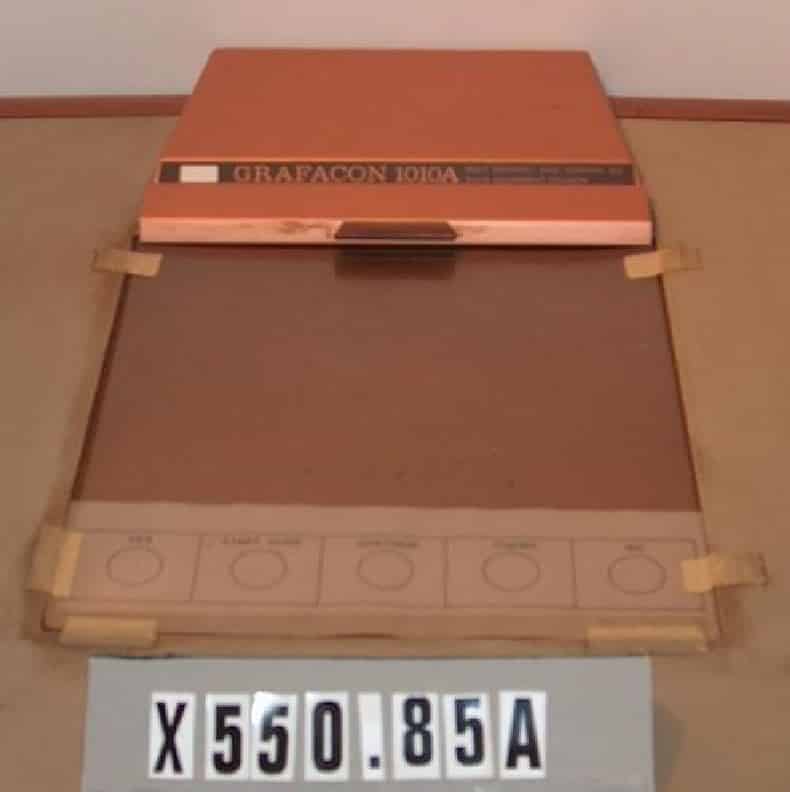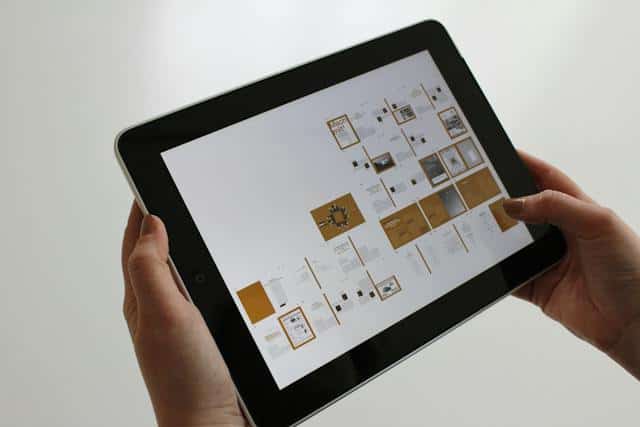Who is the forgotten grandpa of touchscreen tech (that cost a fortune)?
The year was 1963 and personal computers, let alone graphics
tablets, were decades into the future. But RAND Corporation in
Santa Monica, California, USA was developing a precursor to them
under contract to ARPA. ARPA was later involved in networking
and early development of ARPANET, a starting point of the
Internet. The purpose of the research was, "larger interest in
the area of man-machine communication and interaction". This
device was a digital graphics tablet with a stylus, named Rand
Tablet!
 In some ways, it paved the way to the graphics tablets still in
use today. It was based, in part, on research done by Professor
Herbert M. Teager, then at MIT. His Time Sharing Project had
suggested input devices “that will allow the usage of handwritten or sketched
inputs.” On the physical front, the tablet was a printed circuit
screen with printed-circuit capacitive coupled encoders with
external connections. The writing surface was a 10"x10" area
with a resolution of 100 lines-per-inch.
In some ways, it paved the way to the graphics tablets still in
use today. It was based, in part, on research done by Professor
Herbert M. Teager, then at MIT. His Time Sharing Project had
suggested input devices “that will allow the usage of handwritten or sketched
inputs.” On the physical front, the tablet was a printed circuit
screen with printed-circuit capacitive coupled encoders with
external connections. The writing surface was a 10"x10" area
with a resolution of 100 lines-per-inch.
The device generated 10-bit 'x' and 10-bit 'y' stylus position information and was connected to an input channel of a general-purpose computer along with an oscilloscope display. The tablet was a novelty in that RAND felt the natural need for a stylus for interaction with the screen. This allowed for a new freedom of expression in direct communication with computers.
They write, "...it was felt that exploration of man's existent dexterity with a free, pen-like instrument on a horizontal surface, like a pad of paper, would be fruitful." The researchers integrated a pressure-sensitive switch in the tip of the stylus to allow for more natural strokes of the "pen device". A lot of care was taken to make the device as user friendly as possible - with the company going as far as creating a custom handwriting recognition program, GRAIL(for Graphical Input Language) to go along with it.
Holding a stylus, users could draw shapes and text on the tablet, which GRAIL smoothed out and rendered correctly on a larger monitor in real time. GRAIL was programmed to identify 53 hand-drawn numbers, letters, symbols, and geometric shapes.
"Even more innovative was the use of gestures to manipulate
what's on-screen: Users could delete things by scribbling them
out or writing over them, for example, or they could grab a
shape and move it or change its size", writes RAND Corporation
in a blog about the tablet.

So, what were the applications?
They found the tablet to be particularly valuable in applications where "excellent linearity and accuracy" were important. Since the ARPA was also responsible for developing new technology for the military, the researchers envisioned it would pave the way for manual tracing of maps in order to digitize contours by tracing with the stylus.
The team went on to predict, "Additional application areas might be served by more development effort in directions such as providing for rear-projection of images onto the (translucent) tablet panel." In addition, in the fascinating realm of digital computer graphics, one notable endeavor revolved around advancing the creation of computer programs that could transform input data into binary images. These images, in turn, enabled the visual representation of various elements such as contours, alphanumeric characters, background maps, and isoshades.
Initially designed to generate automated weather charts, these programs underwent extensive enhancements to encompass an array of other practical domains. Among the expanded applications were line plots, bar charts, engineering drawings, halftone pictures, geological contours, seismic traces, and even war game maps. It is important to highlight that these diverse applications found their utility not only in industry but also within the military, demonstrating the wide-ranging impact of these advancements in the field of computer graphics.
Physical manifestations of the research today exist in the form
of "Grafacon 1010A Digitizing Tablet" manufactured by Bolt,
Beranek and Newman, Inc in 1964. It would still be some decades
before a descendant like iPad or Galaxy Tab landed in your
hands. For it certainly wasn't meant for home use, considering
the price tag.
It cost $18,000 apiece - or nearly $140,000 today!

references
- https://www.rand.org/blog/rand-review/2018/09/the-rand-tablet-ipad-predecessor.html
- Davis, M.R. & Ellis, T.O. (1964a). The Rand Tablet: A Man-Machine Graphical Communication Device, Proceedings of the Fall Joint Computer Conference, 325-331.
- Grafacon 1010A Digitizing Tablet in the collection of the Computer History Museum http://www.computerhistory.org/collections/catalog/X550.85A
- Davis, M.R. & Ellis, T.O. (1964). The Rand Tablet: A Man-Machine Graphical Communication Device, Memorandum RM-4122-ARPA, Prepared for: Advanced Research Projects Agency by the Rand Corporation.
- http://www.bitsavers.org/pdf/americanDataProcessing/Digital_Computer_Graphics_Volume_2_A n_Annotated_Bibliography_1967.pdf